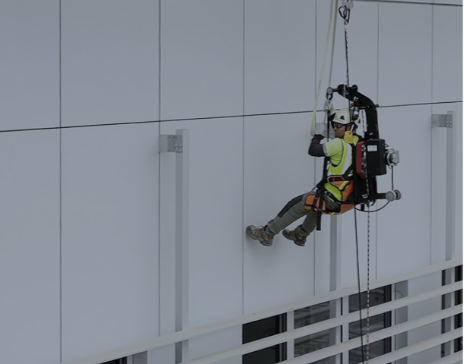In the Philippines, rail systems play a critical role in transportation, connecting cities and provinces, and supporting the movement of both people and goods. As the demand for faster, safer, and more efficient travel grows, the importance of rail system maintenance and optimization becomes even more significant. Proper maintenance ensures the safety and reliability of rail services, while optimization boosts efficiency and reduces operational costs. This article delves into expert insights on rail system maintenance and optimization, highlighting best practices and challenges specific to the Philippines.
Understanding Rail System Maintenance: An Essential Component for Safety and Performance
Rail system maintenance is crucial for ensuring the safety, performance, and longevity of a rail network. Maintenance activities typically involve regular inspections, repairs, cleaning, and system upgrades. These tasks are designed to prevent accidents and ensure smooth operations.
For rail systems in the Philippines, maintenance is particularly important due to the country’s tropical climate and heavy rainfall, which can cause wear and tear on tracks and infrastructure. Regular maintenance checks prevent sudden breakdowns and major issues, enhancing the safety of passengers and freight.
Moreover, well-maintained systems ensure that trains operate efficiently, helping reduce delays and improve overall service. Given the heavy use of the country’s rail lines, particularly in urban centers like Metro Manila, ensuring that infrastructure is up to date and functional is paramount for public and private transportation.
Types of Rail Maintenance: Preventive vs. Corrective
When it comes to rail system maintenance, there are two main types: preventive and corrective maintenance.
- Preventive maintenance involves routine activities designed to identify potential problems before they become critical. These activities might include track inspections, cleaning, lubricating components, and replacing worn-out parts. Preventive maintenance plays a vital role in avoiding expensive repairs and unplanned downtimes. In the Philippines, this could mean more frequent checks due to the impact of weather conditions, such as typhoons and heavy rains.
- Corrective maintenance, on the other hand, occurs after a failure has been detected. This involves repairing or replacing faulty components or systems. While necessary, corrective maintenance can lead to more significant costs, especially when issues like signal failures or track damage occur unexpectedly.
In the Philippines, focusing on preventive maintenance can help avoid disruptions and minimize the high costs of corrective maintenance, particularly in regions with older infrastructure and heavy passenger loads.
Challenges in Rail System Maintenance in the Philippines
Rail system maintenance in the Philippines is not without its challenges. The country’s infrastructure faces unique issues that require tailored solutions:
- Aging infrastructure: Many of the rail systems in the Philippines were built decades ago, and ongoing maintenance is needed to keep these older systems running. Tracks, bridges, and stations are often outdated, which can increase the need for repairs and replacement.
- Budget constraints: Rail infrastructure projects often require significant investment, and limited budgets can hamper the extent to which maintenance and optimization activities can be carried out. Without adequate funding, the risk of system failures or delays increases.
- Weather conditions: The Philippines is prone to extreme weather, including typhoons and heavy rains, which can cause damage to tracks and stations. Flooding, in particular, can lead to delays and require urgent repairs, making maintenance schedules unpredictable.
- Overcrowding: As cities like Manila continue to grow, the demand for rail services increases. This high passenger volume puts added stress on rail infrastructure, requiring constant maintenance and optimization to accommodate the growing population.
Addressing these challenges requires innovative solutions, investment in modernization, and proactive planning to ensure that rail systems in the Philippines can handle future demands efficiently.
Rail Optimization: How to Improve Efficiency and Performance
Rail system optimization is all about making rail services more efficient and cost-effective. In the Philippines, optimizing rail systems can lead to better performance, lower operational costs, and improved service quality. Several strategies can be used for optimization:
- Upgrading technology: Modern technologies such as automated signaling, real-time tracking, and AI-powered predictive maintenance systems can optimize rail operations. These technologies help detect issues before they escalate, improving overall system reliability.
- Improved scheduling: One of the main issues with rail systems in busy urban centers like Metro Manila is congestion. By using data analytics and optimization algorithms, rail systems can improve train scheduling to reduce delays and maximize the use of available infrastructure.
- Adopting modern trains: The Philippines is gradually modernizing its rail fleet with new, energy-efficient trains. These trains are faster, more reliable, and more environmentally friendly. Introducing more modern rolling stock can significantly improve system performance.
By integrating these optimization strategies, rail systems in the Philippines can offer better, faster, and more reliable services for commuters, thus improving the overall experience.
Sustainable Practices in Rail Maintenance and Optimization
Sustainability is becoming increasingly important in transportation systems worldwide, and the Philippines is no exception. As rail systems expand and modernize, there is a growing focus on sustainable rail systems and eco-friendly rail optimization.
- Energy-efficient trains: The introduction of energy-efficient trains, powered by electricity or renewable energy sources, can help reduce the environmental impact of rail operations. In the Philippines, solar-powered trains and hybrid systems are emerging as viable solutions.
- Waste reduction: Efficient waste management in stations and on trains is crucial for sustainable operations. The Philippines can further optimize rail systems by reducing energy consumption and minimizing waste in daily operations.
- Green transportation initiatives: Rail systems are already more sustainable than road transportation, as they offer an environmentally friendly alternative. Expanding the rail network and integrating green practices, such as using sustainable materials for track construction, can further reduce the carbon footprint of rail operations.
Technological Advancements Driving Rail System Optimization
The rail industry is embracing cutting-edge technologies to drive smart rail systems and improve rail system maintenance. These technological advancements are transforming the way rail networks are maintained and optimized:
- Internet of Things (IoT): IoT devices can be used to monitor rail systems in real-time, from tracking train location and speed to detecting mechanical issues. IoT-powered sensors can identify potential failures before they disrupt service, enabling predictive maintenance.
- Drones and robotics: Drones are increasingly used to inspect rail tracks and infrastructure, especially in difficult-to-reach areas. Robotics can also assist with maintenance tasks, improving safety and efficiency.
- Artificial Intelligence (AI): AI is being used for predictive analytics, optimizing train schedules, and managing passenger flow. By analyzing large datasets, AI can identify patterns and predict future maintenance needs, allowing for more proactive intervention.
These technological solutions can enhance rail performance, reduce downtime, and improve overall system reliability in the Philippines.
The Future of Rail System Maintenance and Optimization in the Philippines
The future of rail systems in the Philippines looks promising, with ongoing plans for modernization and expansion. Key initiatives include:
- Investment in infrastructure: The government is investing in the rehabilitation and expansion of rail networks, such as the Metro Manila Subway and the North-South Commuter Railway. These projects aim to reduce congestion and improve the overall transportation experience.
- Public-private partnerships: Collaboration between the government and private companies will be crucial for the continued growth of the rail sector. These partnerships will help bring in expertise, funding, and innovative solutions for optimization and maintenance.
- Smart and sustainable systems: The future rail system will likely be a mix of smart technologies and eco-friendly solutions. As cities like Manila continue to grow, the demand for efficient, reliable, and sustainable rail services will only increase.
Takeaway
Rail system maintenance and optimization are essential for the safe, efficient, and sustainable operation of the Philippines’ rail infrastructure. By investing in regular maintenance, modernizing technology, and implementing optimization strategies, the Philippines can enhance rail system performance and meet the growing demands of the public. As the rail industry moves toward smarter, greener solutions, the future of rail transportation in the Philippines looks bright.




